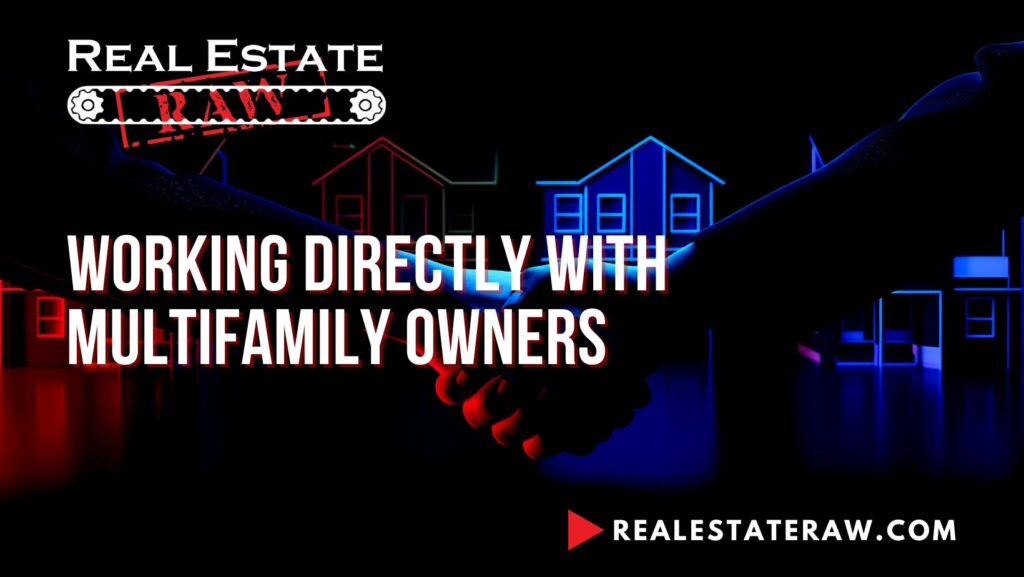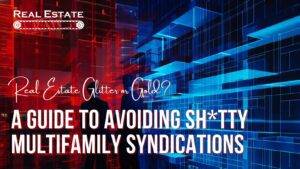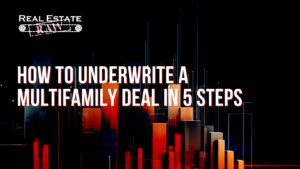Tips on working directly with sellers of multifamily properties.
At the time of this article (10-2-23) we are headed into what we have been calling Red October. In the next 60 days there will be more than $8 Billion in multifamily loan maturities in the U.S. market.
Will the lenders “extend and pretend” or will there be foreclosures? We shall see.
Either way there are now (and will be more) opportunities to buy distressed assets directly from owners as the market shifts. The key is being able to contact a distressed seller and to know the REAL value of their asset. Second is to be able to make an offer quickly. I will show you how to do that here.
Step one is to get a list of multifamily owners in your area. There are lots of ways to do this including some current software that can be purchased that provides this info. As this changes to often I am not going to mention any sources here. Just get a list of owners somehow.
Now that you have your list, step two is to set up a direct contact campaign. Again, there are too many ways to mention here but a few are texting, cold calling, emailing, etc. There are also laws pertaining to the use of these methods so check the regulations before contacting owners.
Once you have a list of owners and you have set up your system of contact, you will eventually wind up on the phone (or in contact someway) with a seller. Here is where I can help.
To evaluate a multifamily asset, you will need the seller financial information such as the trailing 12 and the rent roll. The trick is in how you ask for the information once you get in touch with a seller. Here is how NOT to do it.
You- “Hi this is ______ and I am calling to see if you would like to sell your multifamily property at _______ address?
Seller- “Sure! Everything is for sale. How much do you want to pay?”
You- “I have no idea; give me all your financial information and I will tell you!”
How do I know this doesn’t work???
Here is a better way to approach a seller once you first make contact. Make an offer in the first 60 seconds of the call. How? Easy.
All you need to know going into the conversation is the Cap Rate you want to pay for a general multifamily asset in an area. For example, a 7% cap rate for all “C” class assets in your area or a 6% cap rate for all “B” class assets.
As soon as you get in contact with the seller you can ask them how many units they have and what the average rent is. This is an easy question for them to answer.
With this info we can quickly calculate the average value for their property. Here is how.
(Total number of apartments) X (average rent per unit) X (12) = Average annual income
Take the average annual income and divide it by 2 and multiply this number by the cap rate.
For example, using a 6% cap rate, 50 units and an average rent of $1,000 a month-
(50 Apartments) X ($1,000 average monthly rent) = $50,000 monthly rent.
($50,000 monthly rent) X (12) = $600,000 Annual rent.
($600,000) X (.06) =
What you are doing here is to quickly create a valuation for the property using the average annual rent and the cap rate. This is not a detailed enough calculation for a proper offer, but it is good enough for deciding whether your seller is going to sell for a price that is even close to what you want to pay.
Once you have quickly calculated the value of the asset you can give a verbal offer in less than 60 seconds of first speaking with the seller. Don’t give the specific number you just calculated, but a range of about 10% above or below that number.
For example, If I have decided that the property is worth $1,000,000, I would verbally make an offer of $900,000 to $1,100,000. The reason for giving a range is to just start the conversation about pricing. You need to get the financials to be able to give an accurate offer. This ranged offer is to get you access to the financials.
As I stated, it has been my experience that if you ask a stranger for their financial information, they tend to resist that. If you make an offer first, the conversation goes differently.
Sellers tend to be less defensive about telling you how much the average rent for their units is. This info is also very easy to get online with a simple apartment rent search in the area.
Once you are in contact with the seller (probably on the phone/in person), you can ask about the rents and then use this “back of the napkin” formula to make that ranged offer.
Once I get the info and make the calculations, I will say something like-
“Ok, it looks like my team and I are paying about $900K to about $1.1 million. Does this sound like something you might be interested in?”
If the seller says “Yes”, then I tell them that for a more formal offer I would need some more financial information. Now I ask for the T12 and rent roll.
If the seller says “No”, then I thank them for their time and move on. This is a seller who is not willing/capable of selling at or near my offer price… waste of time. Next.
This concept of making a ranged offer quickly is meant to be something you do once your marketing has brough you a potential seller. There are many ways to find sellers, but I have found that this technique works best once you have contacted them.
Your second option is to make a creative financing offer for the property. This could be seller financing or a master lease option.
For more information like this check out my blog at www.realestateraw.com/blog and join my Facebook group Real Estate Raw for Multifamily Investors.
Best of luck!
Bill Ham


































